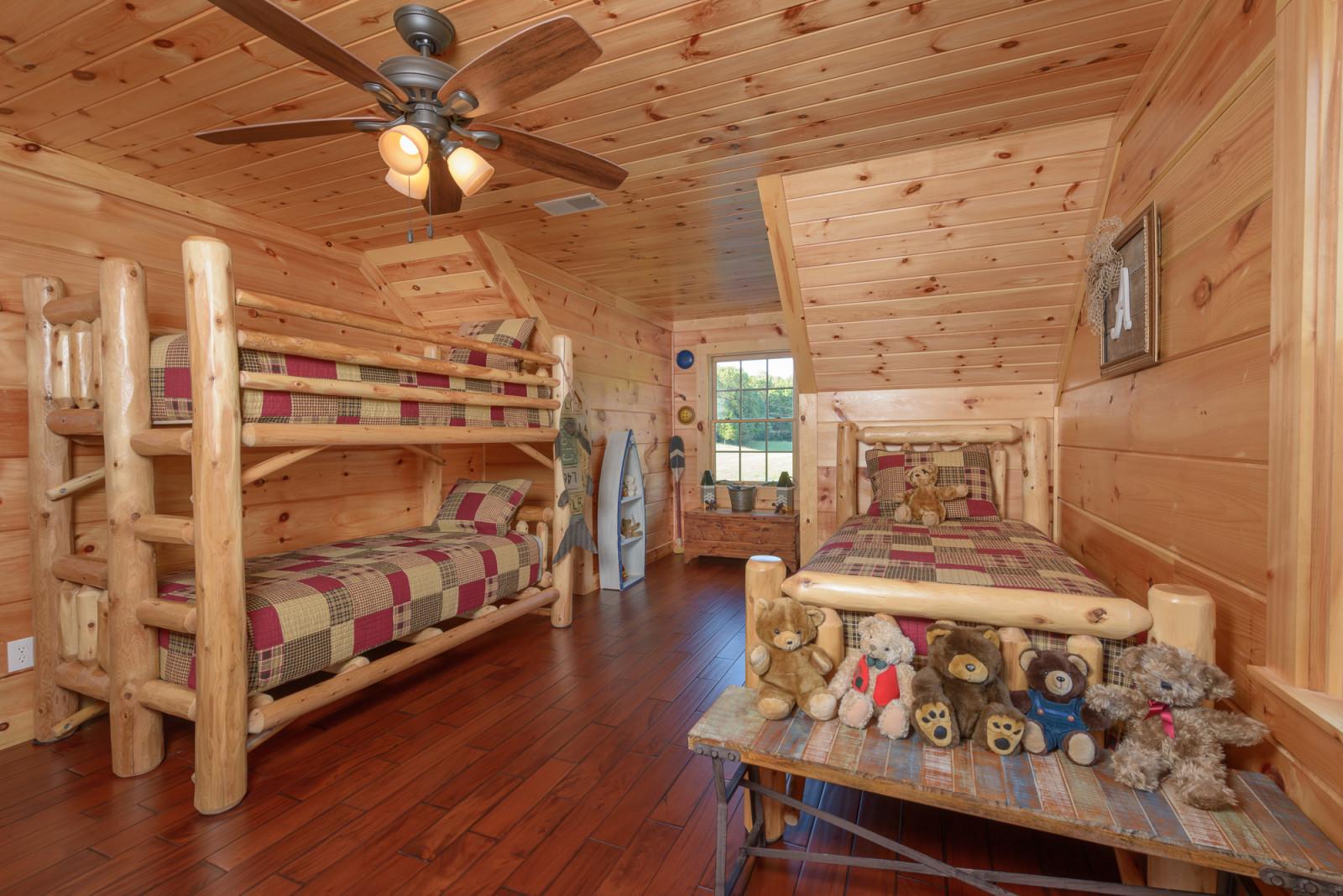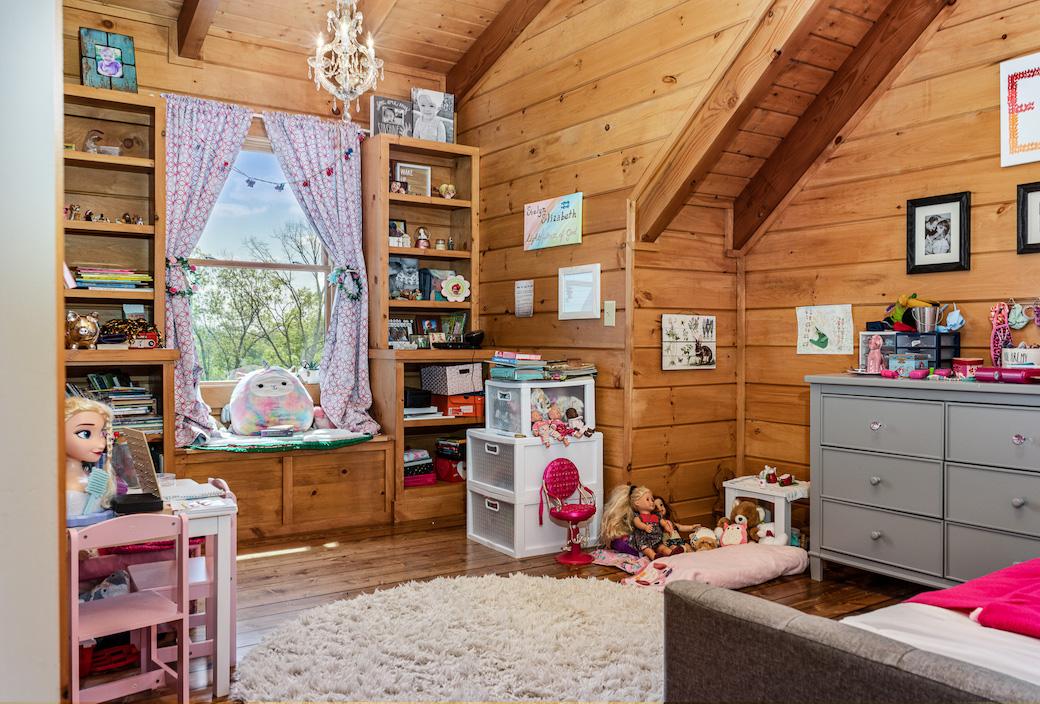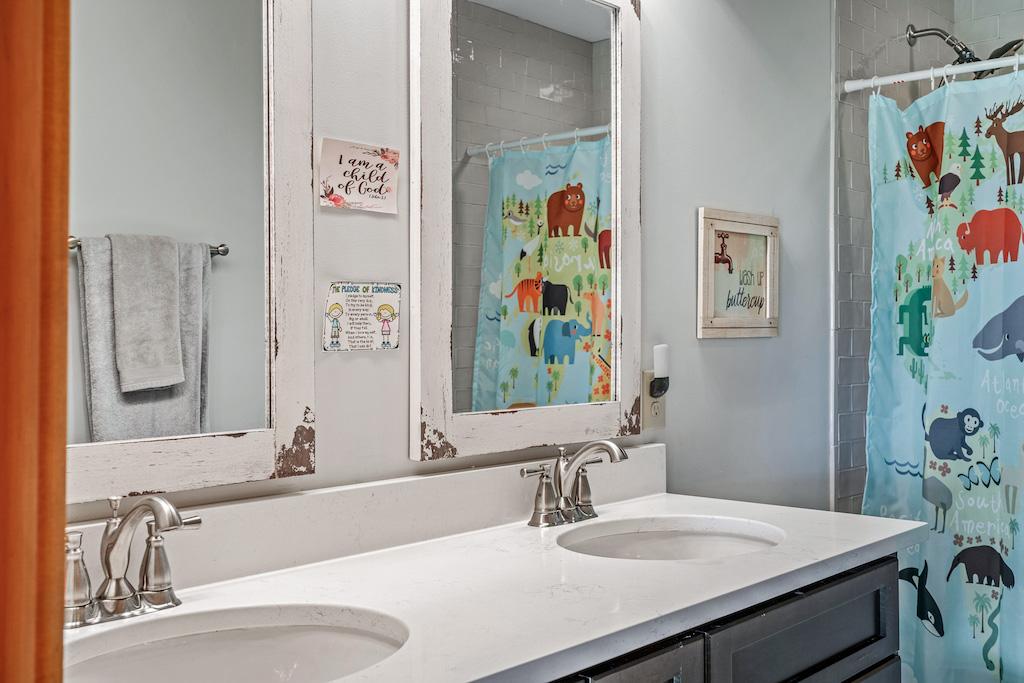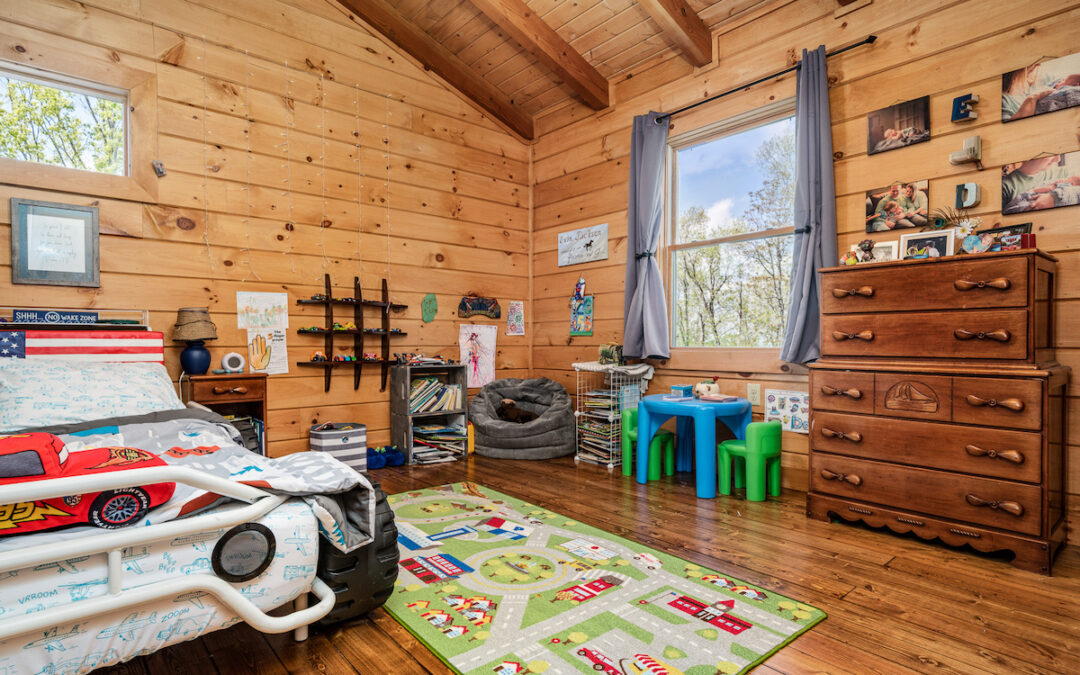More and more at Honest Abe Log Homes we are seeing couples forego waiting for retirement to have their custom log or timber frame home and build while their children are young enough to enjoy growing up surrounded by the beauty of wood.
During the design process parents would be wise to incorporate some of the following ideas into the initial planning rather than wait until the home is finished and make inconvenient and perhaps costly alterations.

Safety
There are several safety precautions that you should consider when designing a child’s room, depending, of course, on the age and maturity level of the child. By following these safety precautions, you can help create a safe and enjoyable space for your child.
Keep sharp or breakable objects out of reach: Children are curious and may try to touch or play with anything they can reach. Keep sharp or breakable objects, such as scissors or glass figurines, out of reach to prevent accidents. Floating shelves closer to the ceiling may be a solution, since treasured items can be displayed without being physically accessed. For craft supplies, adding a lockable cabinet may work well so that parents can monitor use of scissors, pens, glue and other items with the potential for harm during misuse.
Install safety gates: If your child is not yet able to climb stairs safely, consider installing safety gates at the top and bottom of the stairs or even in the doorway of the child’s room. We’ve seen parents opt for dutch doors on kids’ rooms (and even rooms for pets).
Secure heavy furniture: Make sure that heavy furniture, such as dressers and bookshelves, are securely anchored to the wall to prevent them from tipping over.
Use cordless window coverings: Children can accidentally get tangled in cords, so choose cordless window coverings for added safety.
Use non-toxic materials: Choose furniture, paint and other materials that are non-toxic and safe for children.
Install smoke and carbon monoxide detectors: Smoke and carbon monoxide detectors in your child’s room to help protect against fires and carbon monoxide poisoning.
Keep electrical outlets covered: Cover electrical outlets with safety plugs to prevent children from sticking their fingers or other objects into them.
Lighting
Protecting the eyesight of children is an investment in their future. Simple lighting tricks in the room where they will sleep and play can prove valuable in many ways. By considering these factors, you can choose lighting that is both functional and suitable for a child’s room.
Brightness: A child’s room should have bright lighting that is easy to see in, especially for tasks like reading and doing homework. Depending on the age of the child, consider using a combination of overhead lighting, floor lamps and desk lamps to provide sufficient light. This arrangement may evolve as they grow older.
Color temperature: Keep in mind that lighting color impacts mood. Warmer color temperatures (2700K-3000K) are more calming and can help create a relaxing atmosphere in a child’s room. Cooler color temperatures (5000K-6500K) can be more energizing and may be better for activities like play or homework.
Dimmability: Dimmable lighting allows you to adjust the brightness of the light depending on the activity or time of day. This can be especially useful in a child’s room as it allows you to create a softer, more relaxed atmosphere in the evening.
Safety: Choose lighting fixtures that are safe and appropriate for a child’s room. Avoid hanging fixtures that are too low or have long, dangling cords.
Energy efficiency: Consider choosing energy-efficient lighting options, such as LED bulbs, to save energy and reduce your energy bills.

Storage
Making sure everything your child needs is close at hand but also out of the way can be a challenge. By choosing the right closet solution for your child’s room, you can help to create a functional and organized space.
Custom closets: Custom closets can be designed to fit the specific needs and dimensions of your child’s room. They can include features such as adjustable shelves, hanging rods, and drawers to help organize your child’s clothes and toys.
Built-in closets: Built-in closets can be a space-saving option and can be designed to blend seamlessly with the rest of the room.
Closet organizers: Closet organizers, such as shelving units and hanging organizers, can help to maximize the space in your child’s closet and make it easier to keep things organized.
Open storage: Consider using open storage, such as baskets or bins, to store toys and other items. This can make it easier for your child to see and access their belongings.
Colorful storage: Use colorful storage options, such as bins or baskets, to add a playful touch to your child’s closet and make it more fun to use.





